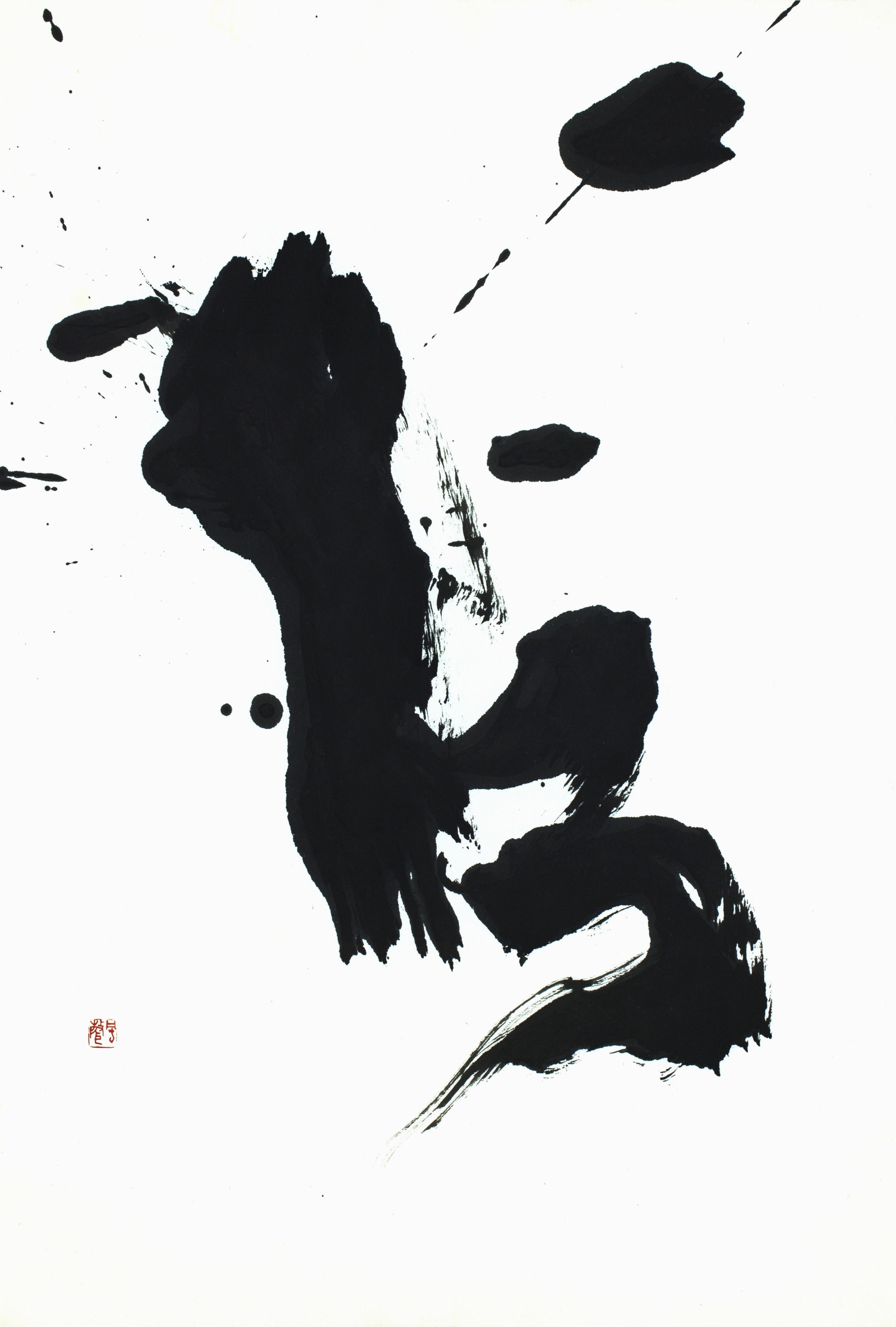Japanese Calligraphy in the 1980s: An Artistic Transformation
日本1980年代書法:藝術的轉化

Japanese calligraphy in the 1980s embodied a dialogue between tradition and modernity. Calligrapher Fūsei created abstract works of bold ink, where sweeping strokes and tonal contrasts revealed spiritual energy and the truth of the moment. Aki’s Sword, with its powerful brushstrokes and strategic blank spaces, transformed calligraphy into a symbol of strength and spirit. Together, these works demonstrate how calligraphy transcended the written word, moving into realms of abstraction and symbolism while engaging with modern art.
Japanese Calligraphy in the 1980s: An Artistic Transformation
The 1980s marked a period of exploration and innovation in the history of Japanese calligraphy. Traditional brush-and-ink techniques were increasingly reinterpreted through the language of abstraction and modernity. Calligraphy was no longer confined to the reproduction of characters; it became a medium for expressing the artist’s spirit and inner world. This article introduces three representative works from that decade: two created by the calligrapher Fūsei, and one by Aki.
Fūsei, Immovable Mind

Created in the 1980s, this abstract work by Fūsei exemplifies the transformation of classical calligraphy into a modern artistic expression. Sweeping strokes of dense black ink dominate the surface, balancing weight and spontaneity. Within the stark contrast of black and white emerge the imagery of towering mountains and cascading streams. Ink splatters and passages of dry brush capture the immediacy of gesture while suggesting contemplative stillness.
Liberated from the constraints of legible text, the work embodies the spirit of “calligraphy as the painting of the heart.” It fuses the discipline of traditional brushwork with the freedom of contemporary art, creating a compelling dialogue between heritage and innovation.
Fūsei, Painting of the Mind

Another of Fūsei’s works from the 1980s ventures further into the realm of abstract calligraphy. Bold, unrestrained brushwork surges across the paper with a distinctly modern rhythm. The dense black ink, spread in broad, forceful strokes, generates a dramatic interplay of grandeur and dynamism. Ink splatters scatter like sparks of energy, while dry brush marks echo the flow of streams, together embodying both movement and stillness.
Although the composition contains no decipherable characters, the power and vitality of calligraphic strokes remain unmistakable. By transcending the written word, Fūsei transforms brushwork into pure abstraction—an expression of both ink’s material richness and the artist’s inner energy. The piece abandons conventional order to reveal, directly and immediately, the state of the artist’s mind in the moment of creation.
Ultimately, this work reflects both a deconstruction and reinvention of the calligraphic tradition. Bearing the weight of East Asian ink heritage while embracing the openness of modern art, it expands the scope of calligraphy into a broader artistic dialogue.
Aki, Sword

In contrast to Fūsei’s works, Aki’s Sword, created in the 1980s, carries a strong sense of symbolism and dramatic intensity. The composition is dominated by bold black ink, executed with strokes that are at once firm and decisive—like the sharp edge of a blade cutting through the air. A central vertical stroke anchors the piece like the spine of a sword, while the flanking brushstrokes suggest the motion of drawing and sheathing it, establishing a vivid sense of rhythm.
The gradations of ink, from dense to light, evoke the solidity of the sword’s body as well as the fleeting shimmer of its blade. Areas of blank space function like silence and breath, offering viewers the lingering resonance that follows a strike.
Aki transforms calligraphy into a symbolic expression of the sword’s spirit. The work conveys not only strength and sharpness but also restraint and composure, elevating the sword beyond its role as a weapon into an emblem of spirit. This approach—expressing meaning through the brush—is at the heart of Eastern aesthetics.
Conclusion
Together, these three works demonstrate how Japanese calligraphy of the 1980s broke free from the confines of literal writing, moving toward abstraction and symbolism. Fūsei’s art reveals the vast energy of the spirit through the momentum of ink, while Aki’s Sword embodies strength, sharpness, and inner restraint. In this era of artistic experimentation, Japanese calligraphy forged a new identity—bridging tradition and modernity, text and image—leaving behind a legacy of profound artistic resonance.

